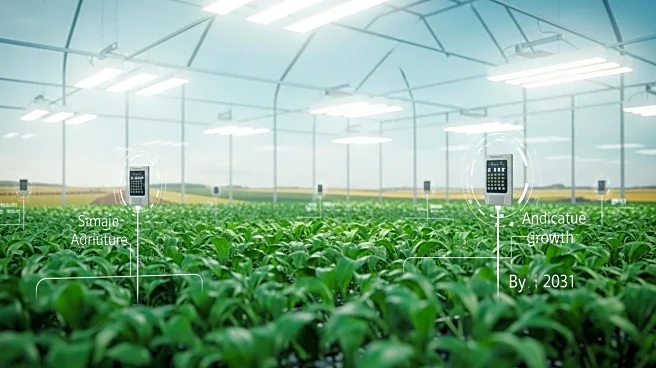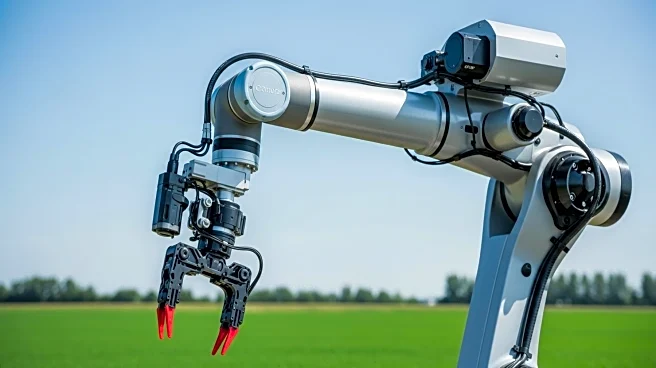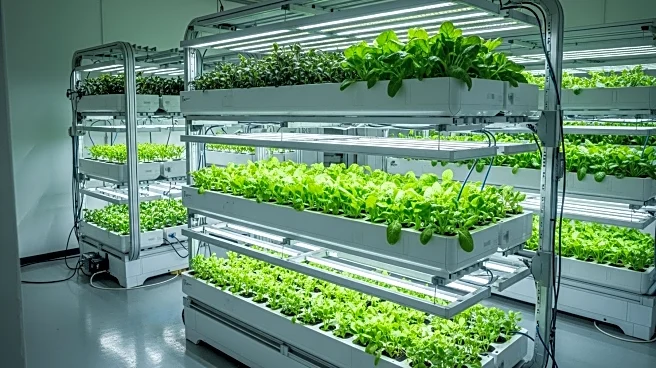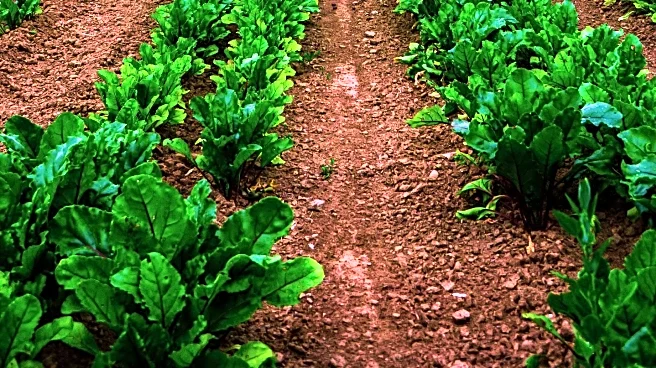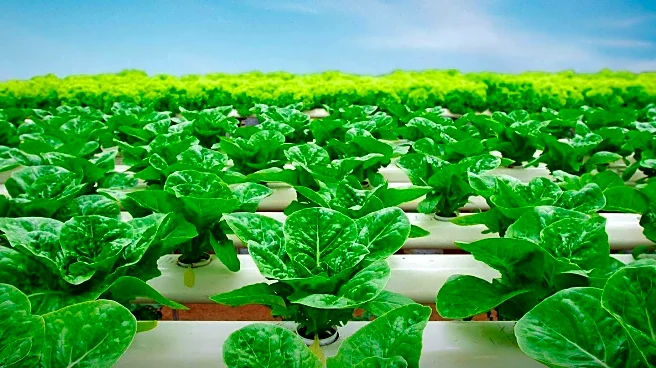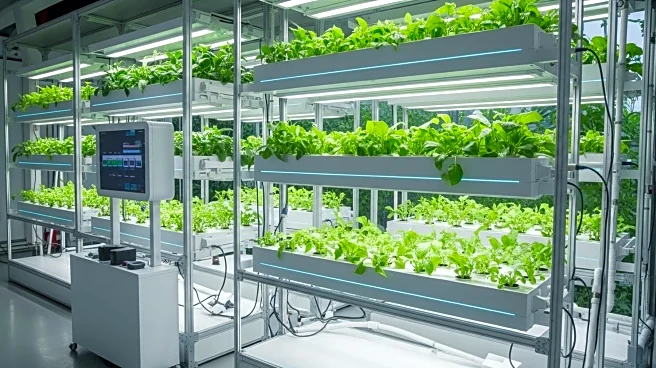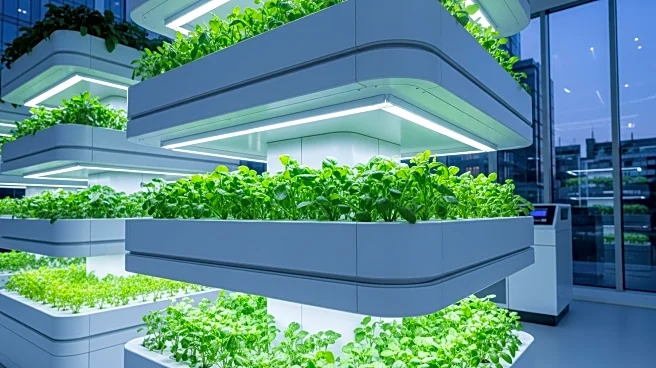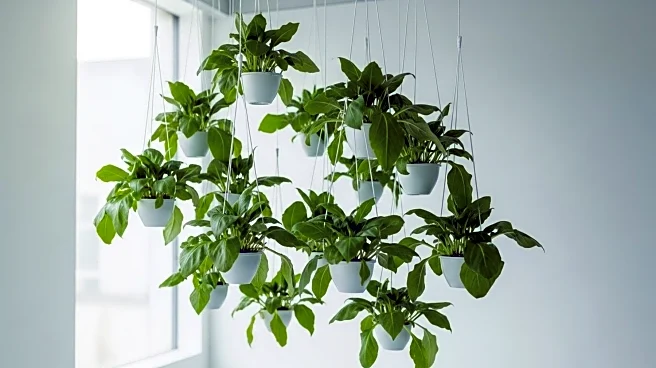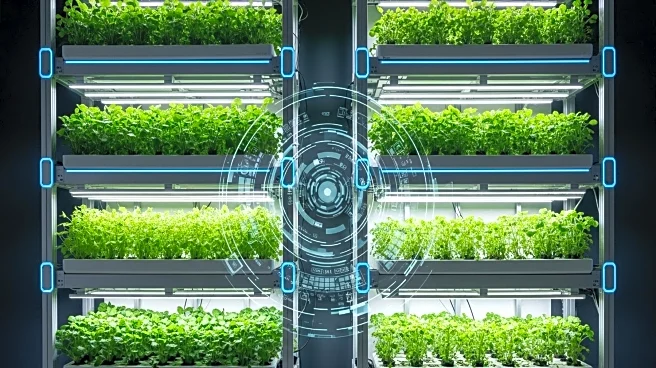What's Happening?
The Controlled Environment Agriculture (CEA) market in the United States is projected to grow significantly, reaching an estimated value of $271.01 billion by 2032. This growth is driven by advancements in technology and increasing demand for sustainably-produced food. CEA involves growing crops in controlled indoor or greenhouse environments using methods like hydroponics, aeroponics, and vertical farming. Recent developments include partnerships between vertical farming companies and grocery retailers, as well as state incentives for containerized agriculture startups. Key players in the market include Hydrofarm Inc., Illumitex, and Virgo Technologies Inc.
Why It's Important?
The expansion of the CEA market is crucial for addressing food security and environmental sustainability. By optimizing plant growth and reducing resource usage, CEA offers a solution to the challenges posed by traditional agriculture, such as land scarcity and climate change. The market's growth is supported by government initiatives and technological advancements, making it more accessible and scalable. This shift towards controlled agriculture could lead to increased availability of chemical-free, high-quality produce, benefiting consumers and contributing to a more sustainable food system.
What's Next?
As the CEA market continues to grow, further technological innovations and government support are expected to enhance its scalability and efficiency. The focus will likely be on expanding urban farming initiatives and integrating digital infrastructure to improve supply chain connectivity. Stakeholders, including commercial growers and research institutions, may increase investments in CEA technologies to capitalize on emerging opportunities and meet consumer demand for organic produce.
Beyond the Headlines
The rise of CEA could lead to significant shifts in agricultural practices, with potential ethical and cultural implications. As urban farming becomes more prevalent, it may change the landscape of food production and consumption, fostering a closer connection between consumers and their food sources. Additionally, the emphasis on sustainability and resource efficiency aligns with broader environmental goals, potentially influencing public policy and societal attitudes towards agriculture.

